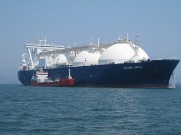The 2nd Life Cycle GHG Emission Study on the Use of LNG as a Marine Fuel revisits its 2018/2019 research, using the latest available engine and supply chain data to bring the study fully up-to-date.
The study, commissioned by industry organizations SEA-LNG and SGMF, was conducted by Sphera according to ISO 14040/14044 standards and was peer-reviewed in accordance with ISO/TS 14071 by a panel of independent academic experts.
It found that, in addition to the considerable air quality benefits it delivers, LNG can “beyond question” contribute significantly to the International Maritime Organization’s (IMO) GHG reduction targets.
On an engine technology basis, the Well-to-Wake GHG emissions reduction benefits are between 14% to 23% for 2-stroke slow-speed engines, and between 6% to 14% for 4-stroke medium-speed engines compared with oil-fueled engines. The study forecasts that, by 2030, 2-stroke engines using LNG will offer GHG benefits of up to 24%, 4-stroke engines of up to 22%, and technological improvements will significantly reduce and minimize methane emissions.
The comprehensive report uses the latest primary data to assess all major types of marine engines and global sources of supply with quality data provided by original equipment manufacturers including Caterpillar MaK, Caterpillar Solar Turbines, GE, MAN Energy Solutions, Rolls Royce (MTU), Wärtsilä, and Winterthur Gas & Diesel, as well as from ExxonMobil, Shell, and Total on the supply side. Methane emissions from the supply chains as well as methane released during the onboard combustion process (methane slip) have been included in the analysis.


